Sand and Silt
Dhangmari Bangladesh has become highly vulnerable to the impacts of climate change but the community continues to keep local climate solutions. Stilted homes are constructed to elevate above the saline filled waters, in order to withstand from the rising tides, river erosion, and flooding. This is only one innovative solution that has helped this community adapt to these environmental changes. However, each year many of these homes are damaged or destroyed during peak cyclone season. Storms and rising tides have only become more intense over the years, leaving Dhangmari in a state of constant rebuilding and adaption. There is a a current estimate of 5 million people who live on sand and silt in Bangladesh, enduring this state of vulnerability.
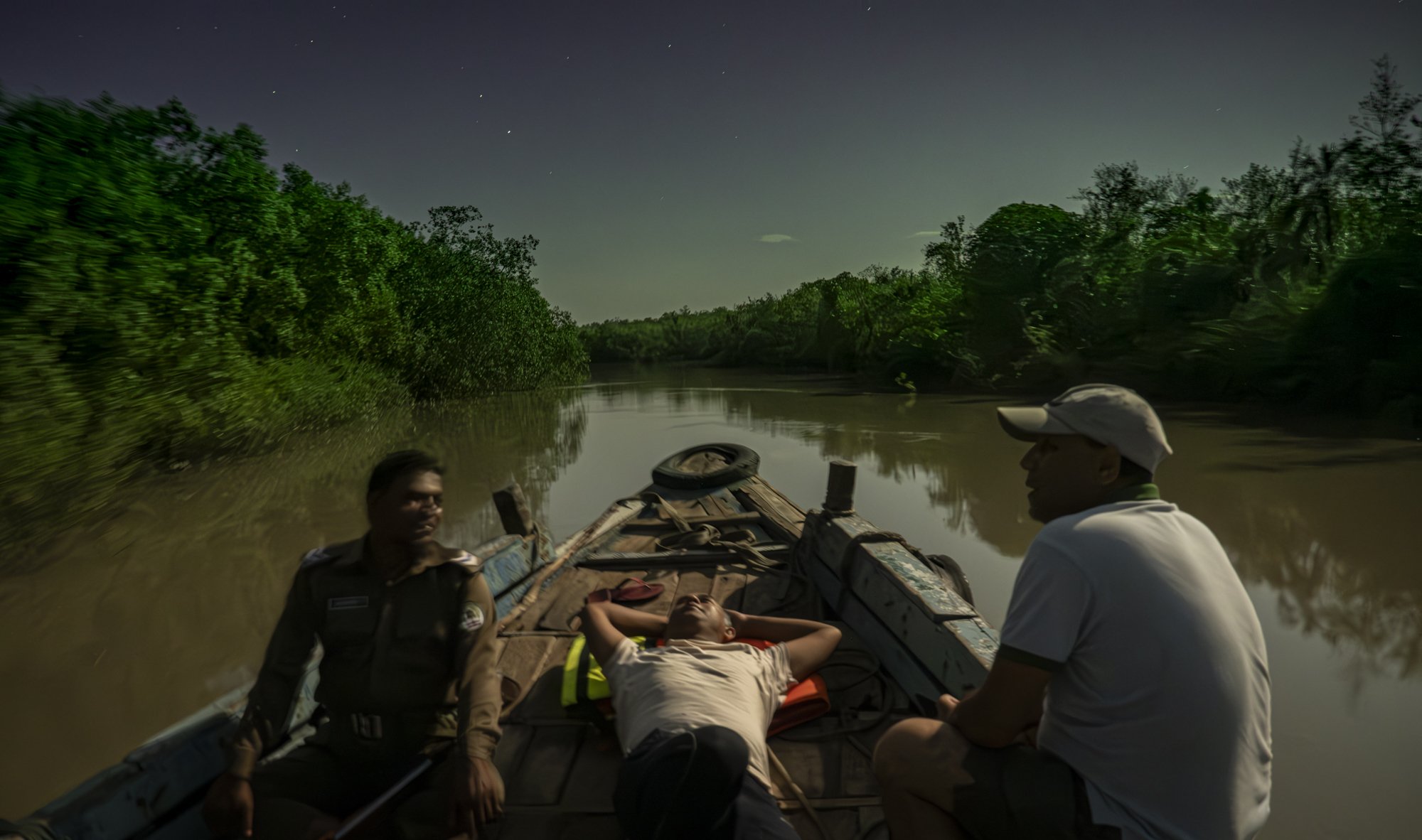
Sha Jaman Khan (Popul), his captain, and guard, float through the mangroves, off a channel that diverts from the Pashur river in Bangladesh. The moonlight and the company of fireflies light up the night sky.

The village of Dhangmari, Bangladesh, a small shrimping community.

Villagers walk through the dirt roads together.

A young boy walks along a silty polder in Dhangmari, Bangladesh. Polders are encircled embankments, created in flood-prone areas to mitigate flooding in these Sunderban communities.

Raji-Kan and his son sit in the doorway of their stilted home along the Pashur River in Bangladesh. Their family moved here 5 years ago and have since faced two cyclones. Kan has twice had to carry their belongings into the nearby cyclone shelter, later rebuilding their home that sits atop a char, a thick mud that makes most of the land. While some climate migrants can stay within their villages, others are forced to move to slums in Khulna.

A villager builds a mud embankment, a traditional method of flood prevention, days prior to the arrival of Cyclone Remal. Although these embankments aren't always effective, they are one of the main safety precautions that can be taken.
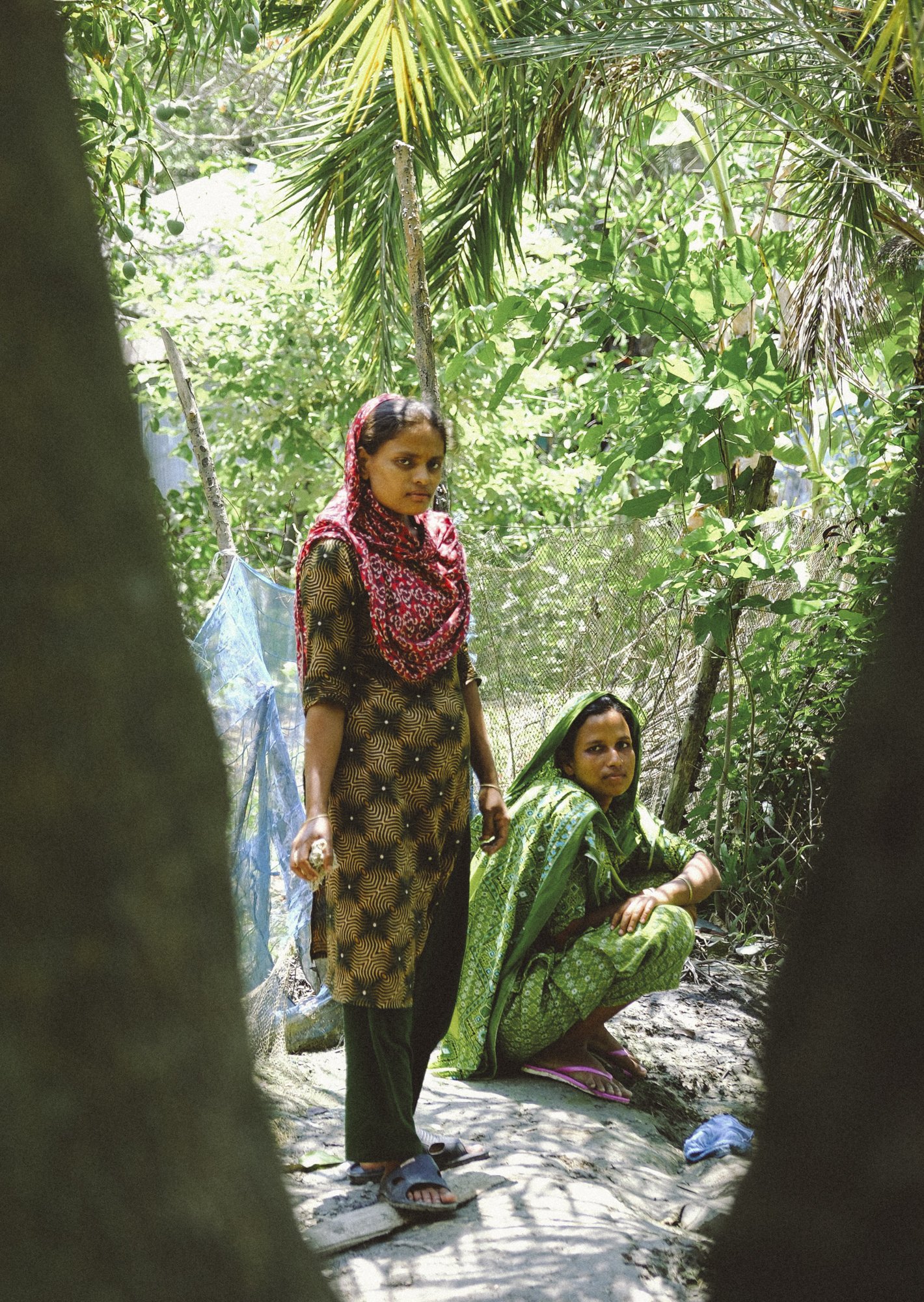

Dhangmari, Bangladesh, is a small village inside the Sundarbans and along the Pashur river. It’s adjacent to the Dhangmari wildlife sanctuary and is surrounded by sustainable mangrove conservation. The waters of the Pashur river are known for it’s increasingly saline water and silty shores due to rising sea levels, endangering much of the aquaculture, mangrove forest, fish populations, and the communities that rely on this area to live.

A stilted home in Dhangmari Bangladesh.
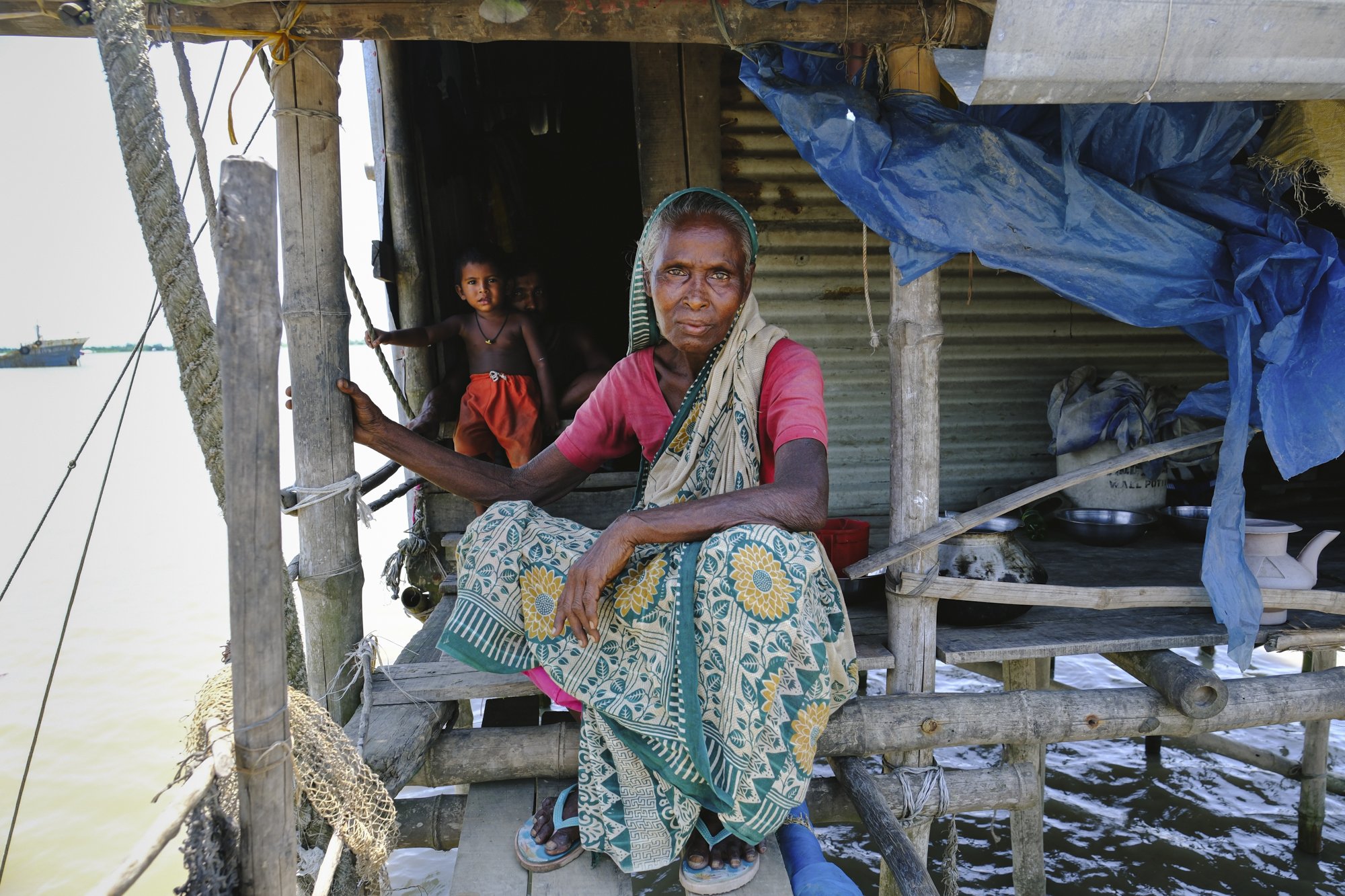
Momena Beguma is an 85 year old prostitute in the Dhangmari Village, in Bangladesh. Beguma makes about 50 Bangladeshi Taka a day working as a prostitute, which is equivalent to 0.43 United States Dollars. Beguma has done this work for the past 15 years, after her husband died of sickness. She lives with her son and her grandson alongside the Passer River in a stilted home, which has to be rebuilt each year due to flooding and river erosion.

The inside of Momena Beguma and her family's house, in the village of Dhangmari Bangladesh. Families that reside in stilted homes fear the destruction and removal of their house due to flooding and cyclones, all the time. Families tend to live minimally, with not many belongings.
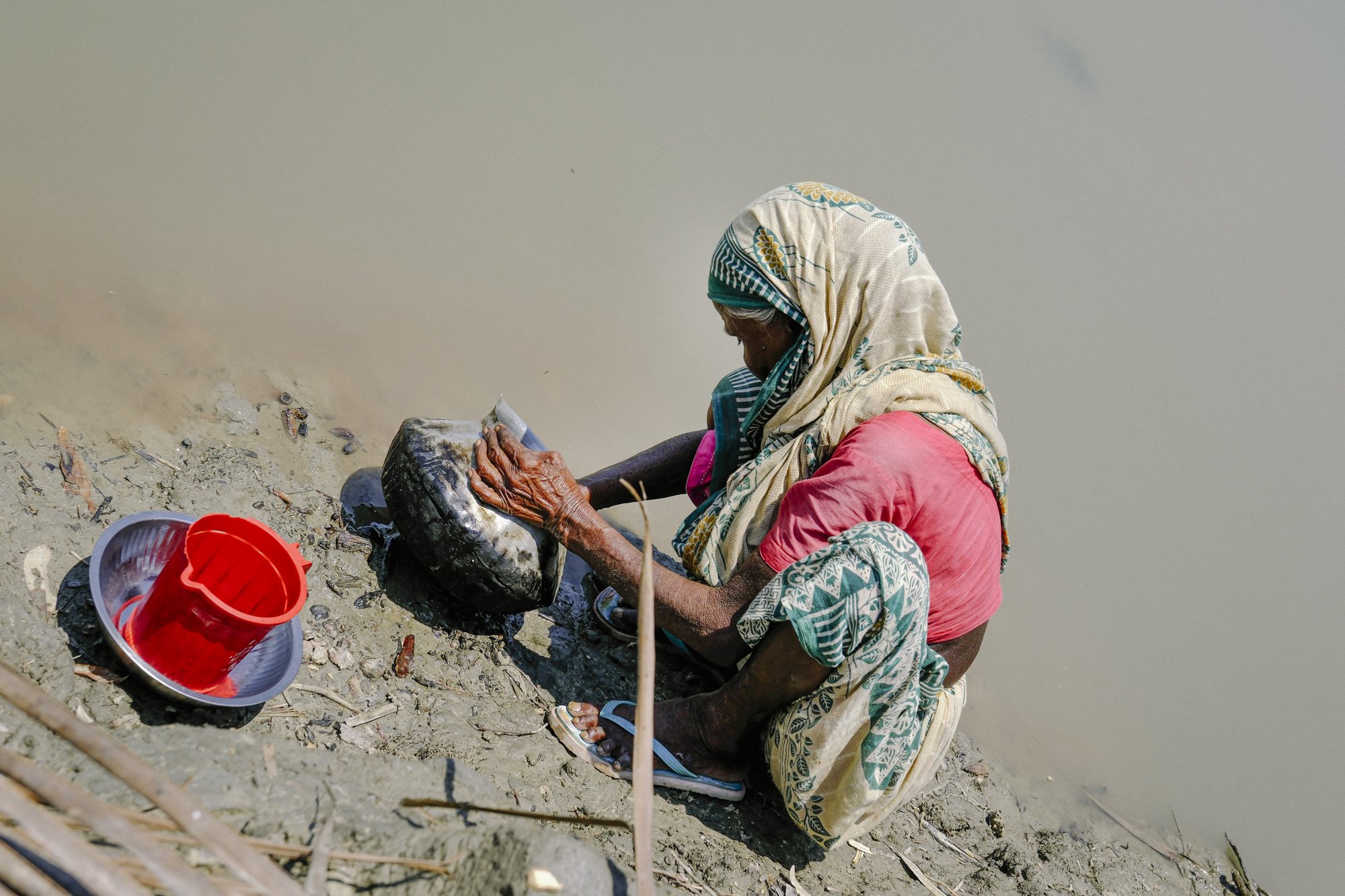
Momema Beguma cleans out a kolosh full of fish from the silty Pashur River on May 22, 2024. Beguma is an 85 year old prostitute in Dhangmari Village, Bangladesh, making about 50 Bangladeshi Taka daily, which is equivalent to 0.43 United States Dollars. Beguma has done this work for the past 15 years, after her husband died of sickness. She lives with her son and her grandson in a stilted home, which has had to be rebuilt 10 times due to flooding and river erosion.

Boatmen steer a wooden dingi towards the Bay of Bengal, under the setting sun.

The inside of a store in Dhangmari, Bangladesh. The security of one chain keeps the shop locked up when no one is around to sell dried goods. Only non perishable items are able to be sold at shops similar to this one, due to no running electricity.
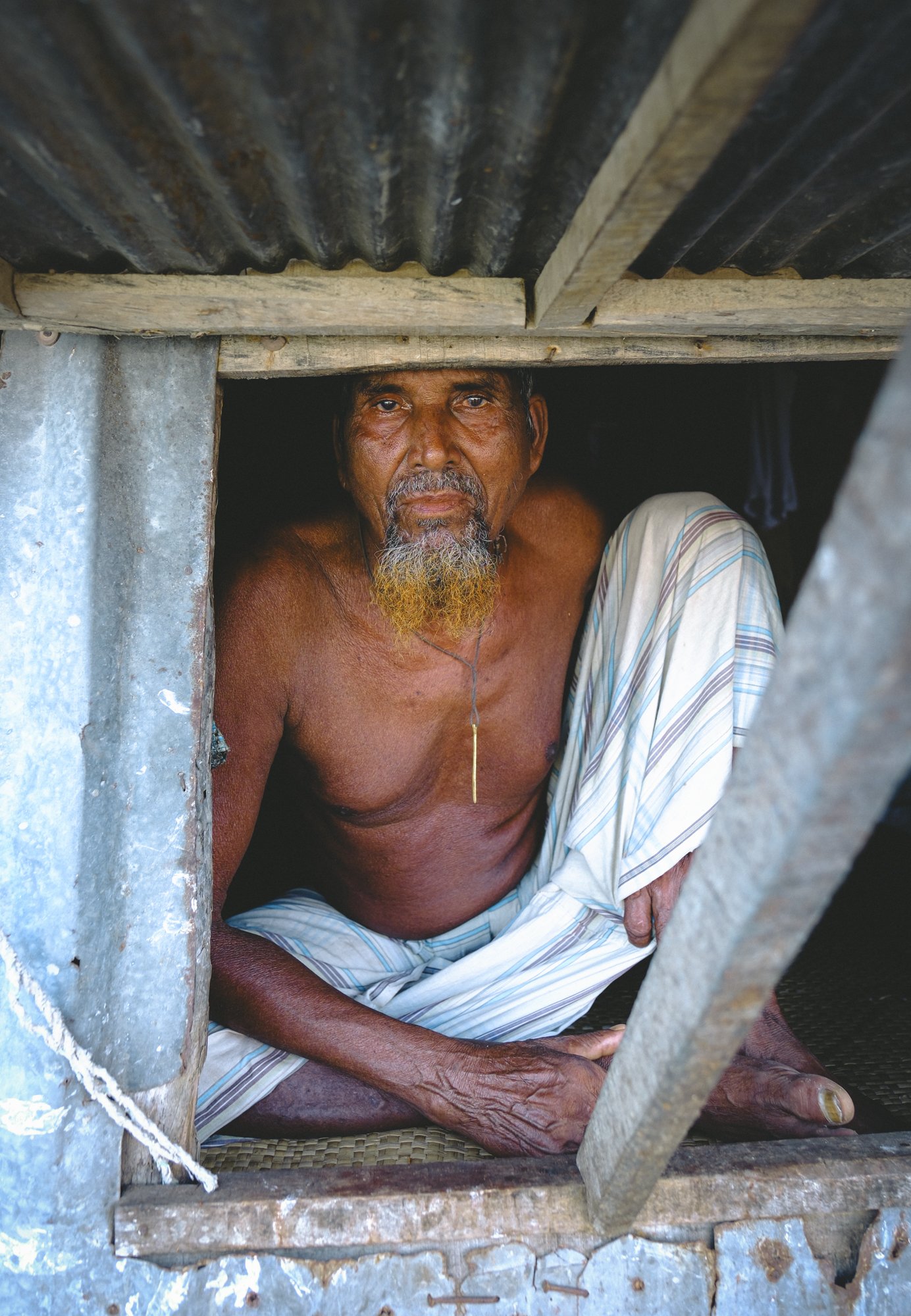
A man sits in the window of his stilted home, alongside the Pasur River, in Bangladesh. There is a current estimate of 5 million people who live in the constant migration, due to rising rivers and climate change.

Ankle deep in silt, Falguni Manda shrimps for hours along the Pashur River in Dhangmari, Bangladesh. Dangmari is known for its increasingly saline water and silty shores, yet it continues to foster a small shrimping community. These shores are also home to many crocodiles, making the work extremely dangerous. However, Manda’s entire family and the rest of the community must fish and shrimp for hours each day to feed their families and earn a small profit.

Men and small boys work on wooden boats on the shoreline near the port of Khulna, only hours before Cyclone Remal will pass through the city.

A small boy in Dhangmari, Bangladesh, rolls wet clay into the formation of a rose. The clay came from the Pashur river, south of Khulna. He left his petals to dry, and then rolled them into the flower, a form of art that the people of Dhangmari cherish.

Long embankments make up many of the small villages in the Sundarbans. Some say these embankments used to be miles wide, but due to the salinity of the water, they've shrunk to only about 10 feet wide.

The men living inside of a small fishing community prepare to begin otter fishing, in a small channel off of the Pashur River. Meanwhile, women clean freshly caught fish from their husbands and brothers for their next meal. They use the rough cement to descale and clean the scales.

A women descales small fish that her husband caught on the concrete boat ramp, by rubbing them on the rough surface.

Otter fishers in the Sundarbans.

Gora Dhangmari Forest Primary School, a small schoolhouse on the Pashur River, continues to have classes, while many schools around the country closed due to high heats.

Students form clay animals as art projects in primary school to represent things they've seen near their home. This includes an alligator that just recently ate all of one families chickens from the back of their house.

Patties of cattle manure is smushed onto many trees to promote enriched soils in the Sundarbans.

A group of villagers swim to beat the extreme heat due to the lack of access to air conditioning.
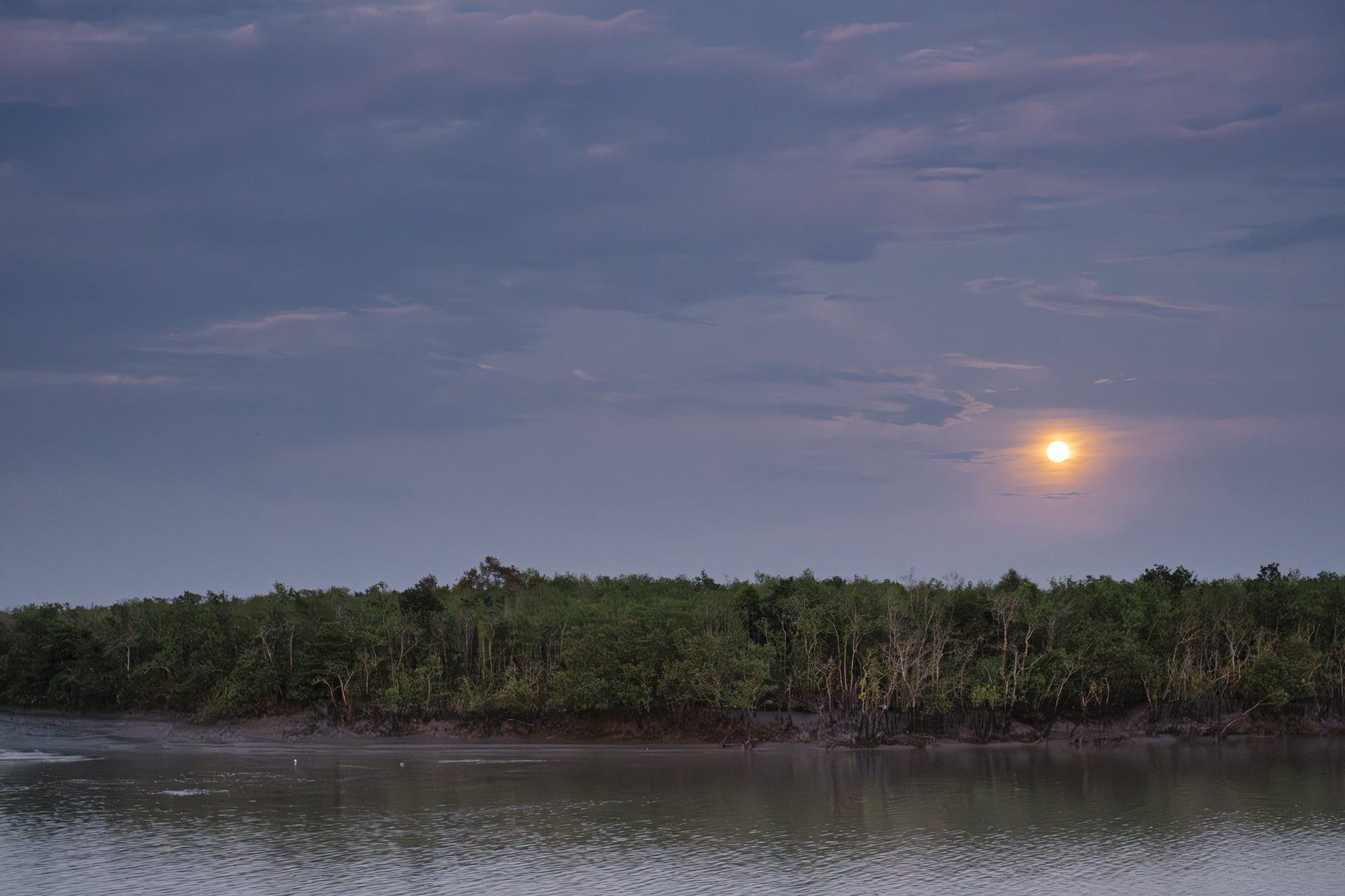
The sun sets above the Sundarbans near the Bay of Bengal.